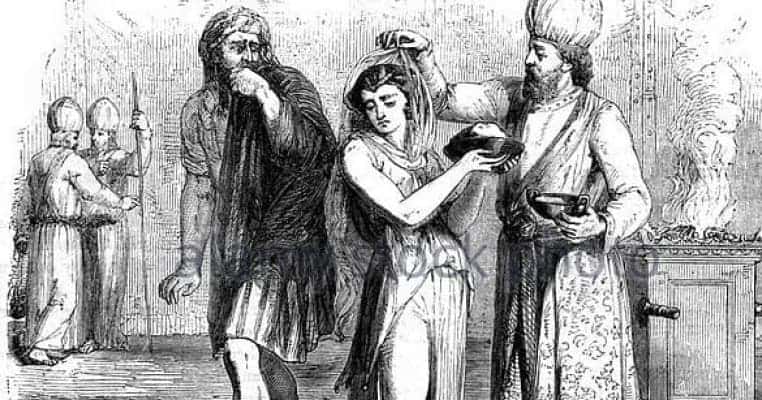
Today, the legal system in the western world tries their best to make sure that everyone is innocent until proven guilty. So, whoever is accusing someone of a crime needs to prove that guilt with evidence, and a judge will decide the criminal’s punishment based on the facts and arguments that are presented to them. This prevents people from pointing fingers at their enemies and claiming they committed a crime without any actual proof. It seems so simple and straightforward, it’s easy to forget that human civilization did not always function this way.
For thousands of years, human beings were not this logical. Someone could accuse their neighbor of a crime, and everyone would believe them, simply because they said so. Once they went to trail, the court relied very heavily on the belief that God would use his power to smite anyone who was guilty of a crime. These trials were based on putting people through some really painful ordeals- unless, of course, they were rich or powerful enough to get a slap on the wrist, or pay someone else to deal with it for them.

Trial By Fire
In modern times, the phrase “trial by fire” usually means that someone is thrown into a difficult situation without any warning, like a mother bird kicking their baby out of the nest and forcing them to fly. The origin of the phrase was once meant to be taken literally.
In Great Britain, a trial by fire was usually used for women who were accused by their husband of committing adultery. She was blindfolded and forced to walk over roughly 10 metal ploughs were heated in a fire until they were red-hot, and laid out on the ground into a pathway. The woman’s feet would then be wrapped in bandages, and if they had healed after three days, she would be innocent. If she was scarred for life, she was guilty.
This sounds like an impossible trial to survive, but apparently, the mother of Edward the Confessor, Queen Emma, survived the ordeal and was cleared of the accusation of adultery. Since she was the Queen, there is always the possibility that she paid someone to make sure the ploughs were cool enough for her to walk on. However, once one person in the public was announced to have had God grace them with mystical healing, that was enough proof to encourage people to keep going with trial by fire for years to come.
Similar trials had been conducted with people holding a hot iron in their hands, pouring hot coals on someone’s bare chest, or walking on top of wooden logs that were on fire. In at least one case, a man got away with walking over burning logs because he had a layer of wax on his feet, and that protected him from burning.

